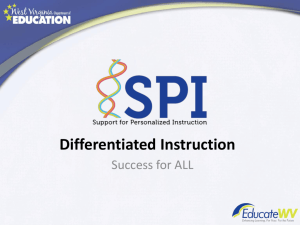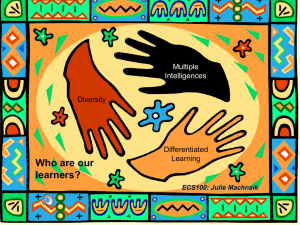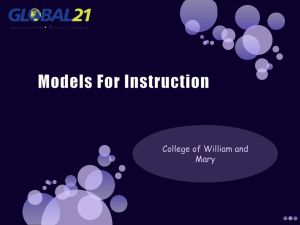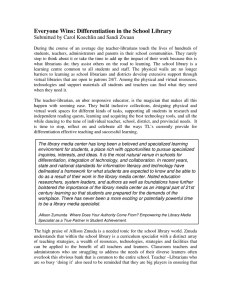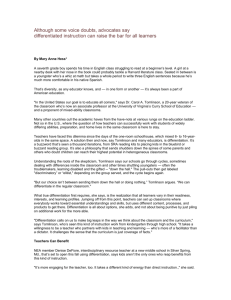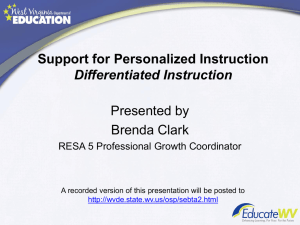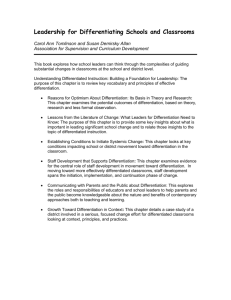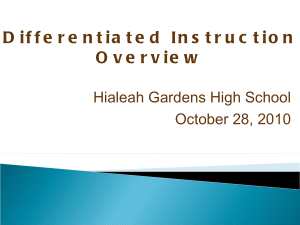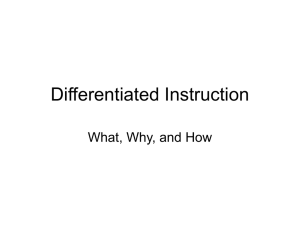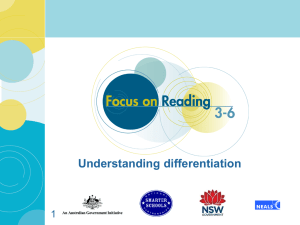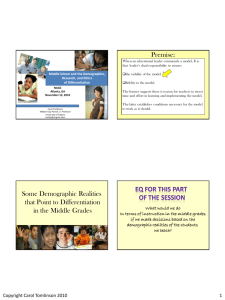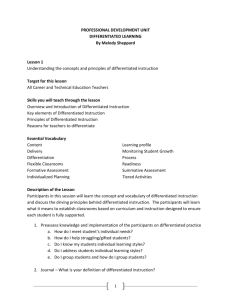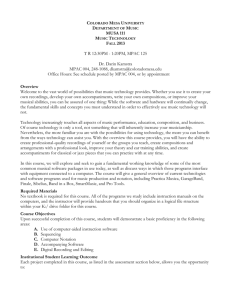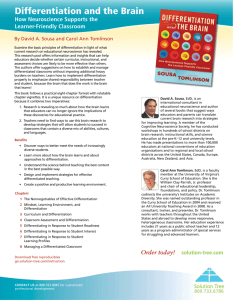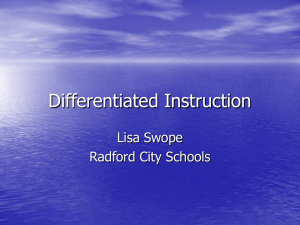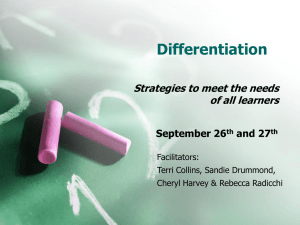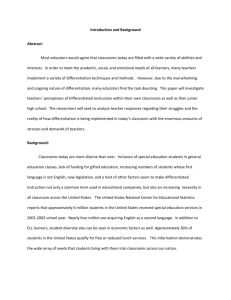Differentiation part 1 - Secondary Social Science Wikispace
advertisement
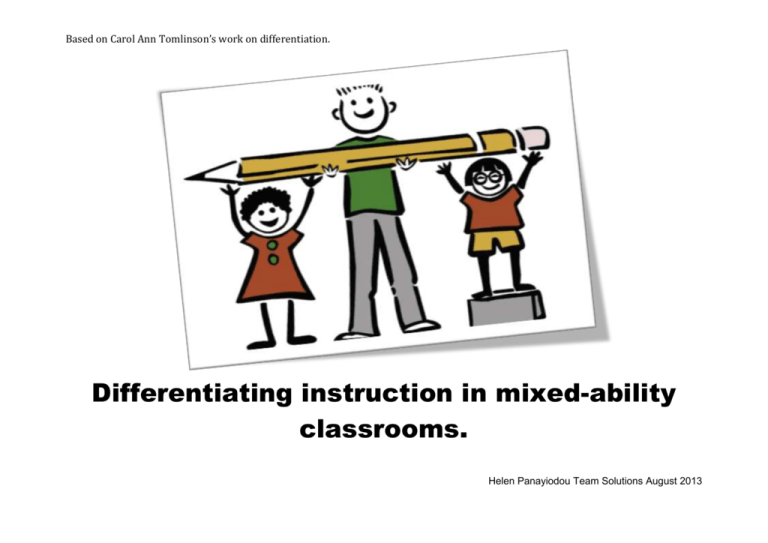
Based on Carol Ann Tomlinson’s work on differentiation. Differentiating instruction in mixed-ability classrooms. Helen Panayiodou Team Solutions August 2013 Based on Carol Ann Tomlinson’s work on differentiation. Based on Carol Ann Tomlinson’s work on differentiation. The complex situation of equity and excellence in our classrooms Students in our classrooms are diverse, they come from different cultural backgrounds have different learning styles arrive at school with differing levels of emotional and social maturity their interests differ (both in topic and intensity) have differing levels of academic readiness Discussion – Why do we teach students all in the same way then? Why do we have the same expectations/goals for every student? Management would be an important reason but how can we offer equity and excellence more effectively? Metaphor – clothing/learning One size doesn’t fit all. Students can choose from a variety of clothing to fit their differing sizes, styles and preferences. This makes clothes more comfortable and gives expression to students’ developing personalities. As anyone who has bought a ‘one size fits all’ outfit, it will inevitably sag – if too big or pinch, even tear – if too small. Activity - discuss this and perhaps show images “At its most basic level, differentiating instruction means ‘shaking up’ what goes on in the classroom so that students have multiple options for taking information (acquiring content) making sense of ideas (processing ideas) and expressing what they have learnt (developing products)” Carol Ann Tomlinson 2004 What differentiated instruction is NOT The ‘individualised’ instruction of the 1970s. Individual programs exhausted teachers and hindered a cooperative approach to learning. What differentiated instruction IS Proactive. Teachers assume/know that different learners have different needs, so teachers can proactively plan to address the range of learning needs. Chaotic. Teachers have a fear of losing control. The lack of classroom management has been an issue in the past with this approach. The reality is that if done well teachers can exert more leadership than less. Purposeful student behaviour/learning is the goal. More qualitative than quantitative. More/less work is not the answer. The quality of work is the key as it focuses on the students’ needs. Based on Carol Ann Tomlinson’s work on differentiation. Just another way to provide homogeneous groupings. Flexible grouping is the key, not only for academic purposes but also emotional and social. Tomlinson used the expression ‘fluid grouping’. Is rooted in assessment. (Diagnostic, formative and summative). Assessing developing readiness levels, interests and modes of learning. Teachers know the needs of the students and design programs to meet these needs. Just ‘tailoring’ the same suit of clothes. Extra questions/tasks is not enough. As is taking questions out for weaker students. Tomlinson refers this as ‘micro-differentiation’. This stigmatizes the student and can switch them off. Metaphor – stretching a garment that is too small or tucking and gathering a garment that is too big is not as good as getting a right fit. Provides multiple approaches to content- input, what students learn; process- how students go about making sense of ideas and information; and product, - output, how students demonstrate what they have learnt. Student-centered. Learning and teaching is for the students and about the students. Learning experiences are more effective when they are engaging, relevant and interesting. Students also take more responsibility for and pride in their own learning. A blend of whole-class, group and individual instruction. Organic. Students and teachers are learners together (AKO). The Inquiry Approach is very relevant here. Teachers continually monitor the match between the learner and learning. A teacher in a differentiated classroom does not see differentiation as a strategy, she does not seek a recipe for differentiation but rather ‘combines what she can learn about differentiation from a range of sources to her own professional instincts and knowledge base to do what ever it takes to reach out to each learner.’ C A Tomlinson 2004
